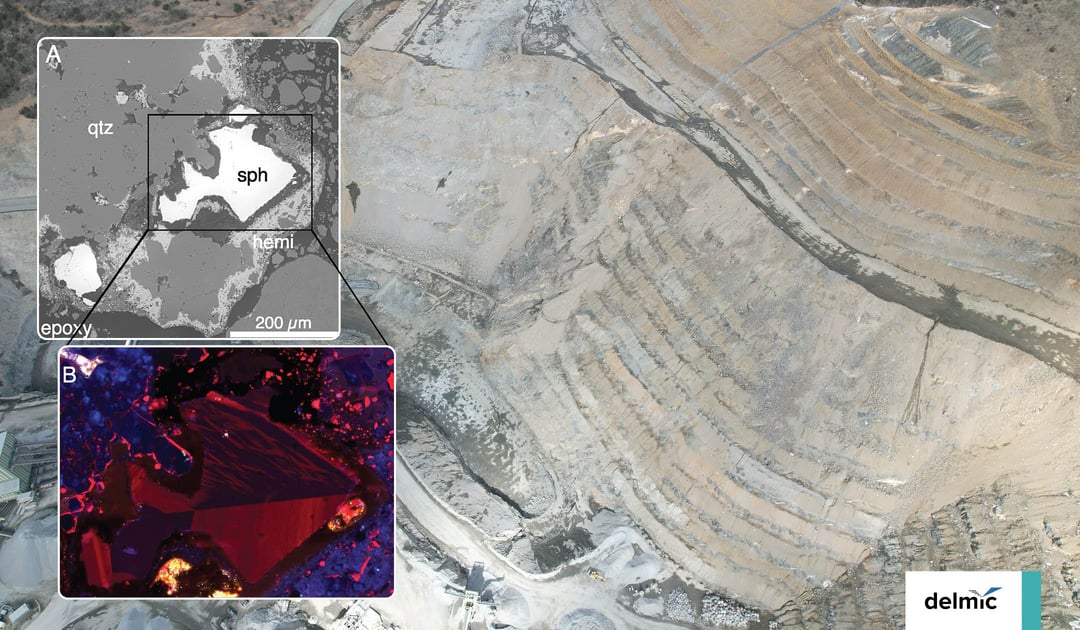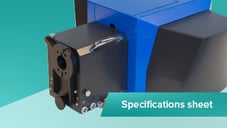Germanium (Ge), with its excellent semiconductor abilities, has a wide range of applications in fiber optic systems and infrared devices, among others. Ge is also used in novel technological developments in solar cells and LED technologies, therefore the demand for this scarce element is expected to increase in the coming years [1].
Germanium is difficult to mine and mostly produced as a byproduct of zinc (Zn) mining. The main host for Ge is the mineral sphalerite, but it can also be found in hemimorphite and willemite.
Mining waste could potentially be a source for extractable Ge.
It is however still poorly understood how Ge in ores can be recovered, how it can be concentrated, and if Ge in waste has a negative impact on the environment.
To gain more insights into Ge behavior in ores, White et al. [2] studied samples from the Tar Creek Superfund Site, a former mining field for Zn and Ge production. They looked at the Ge behavior in PbZn sulfide mine wastes, where weathering has significantly changed the mineral hosts. They analyzed bulk and micrometer-scale samples from six chat piles, which consisted of mostly quartz, but also sphalerite and hemimorphite.
The researchers first investigated the Ge concentrations in the different minerals.
Unexpectedly, they found that in the weathered chat piles the highest concentration of Ge was in the hemimorphite, which is mostly formed as a weathering product, and not in sphalerite (Figure 1). Since quartz was abundant in the samples, a significant percentage of Ge was also found in quartz.
Figure 1: Ge concentrations were measured in the weathered chat piles containing quartz, sphalerite and hemimorphite. The main host of Ge was found to be hemimorphite. Adjusted from [2].
To study the distribution of Ge, they used Delmic’s SPARC cathodoluminescence (CL) detector. CL images were obtained using a filter wheel for the blue, green and red channels and a photomultiplier tube (PMT) detector. They found in sphalerite a correlation between the red color and the Ge content. They could therefore easily image the complex chemical zonation of Ge (Figure 2). They could then select the sphalerite areas with variations in Ge for synchrotron-based μ-XRF maps, EMPA spot analyses and XANES analyses, measuring Ge concentration, oxidation state and bonding. They also measured this for Ge in hemimorphite, which had two distinct morphologies: a small part was a ‘massive block’ and most of it was ‘needle-like fine-grained’. The latter one forms during weathering, and was found to be the main host of Ge.
Figure 2: Distribution of Ge in chat samples. A) backscatter image of a chat sample containing sphalerite (sph), hemimorphite (hemi) and quartz (qtz). B) Using the SPARC CL detector, the complex chemical zonation of Ge was measured in sphalerite. This was used select areas for μ-XRF maps and EMPA spot analysis for C) sphalerite and D) hemimorphite. Taken from [2].
These results imply that weathering effects altered the main host of Ge, from sphalerite to hemimorphite.
It is thus clear that in the future, hemimorphite should also be taken into account when recovering germanium. The ‘needle-like fine-grained’ structures of hemimorphite have a large surface area and are therefore mobile and prone to dissolution. This might be of use for Ge recovery, but it could also potentially pose a health risk. Further research is therefore needed.
In this study, the researchers gained novel insights into Ge behavior. Using cathodoluminescence detection, they could easily view the Ge distribution in the mineral and dive deep into the Ge behavior by selecting areas for further in-depth analyses. This research shows both innovative detection methods for the field of geoscience and exciting novel possibilities for germanium recovery.
References
[1] Curtolo et al., Journal of Crystallization Process and Technology, 7, 65-84, (2017)
.png)









